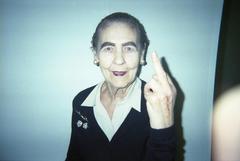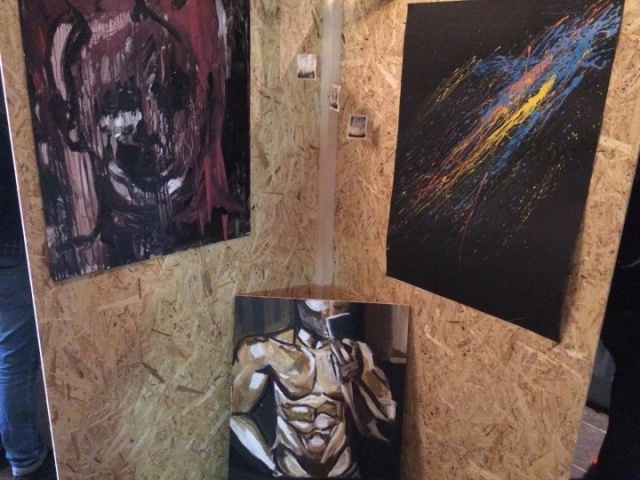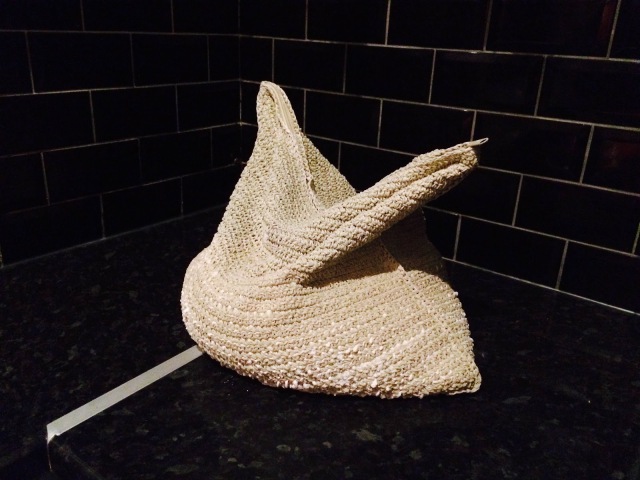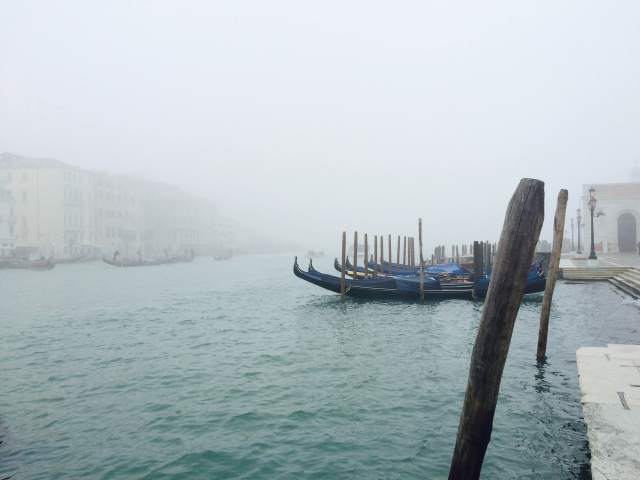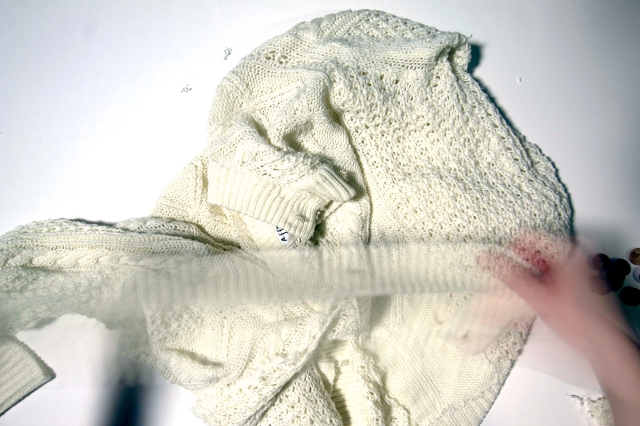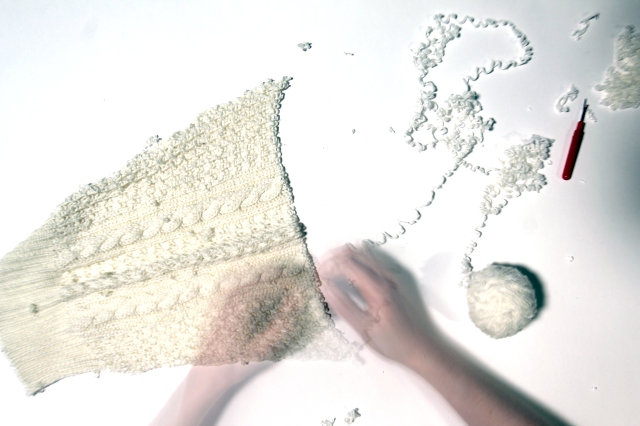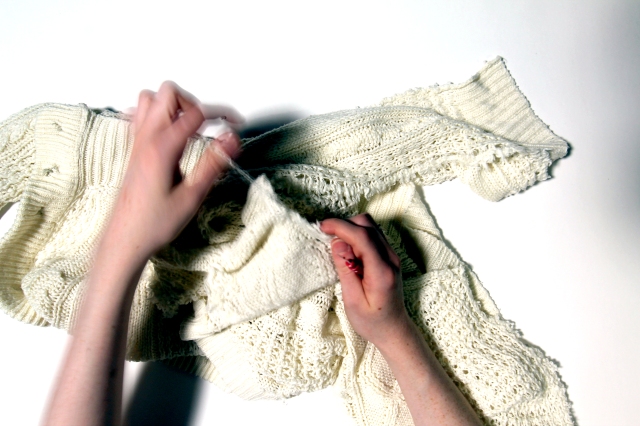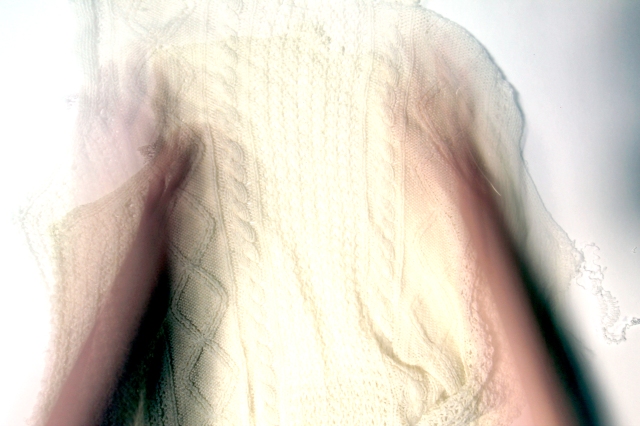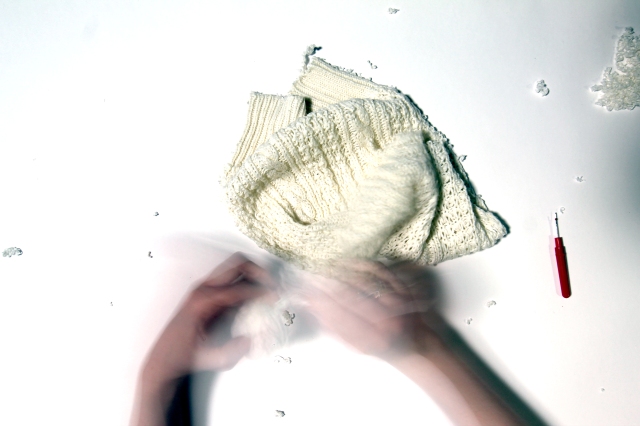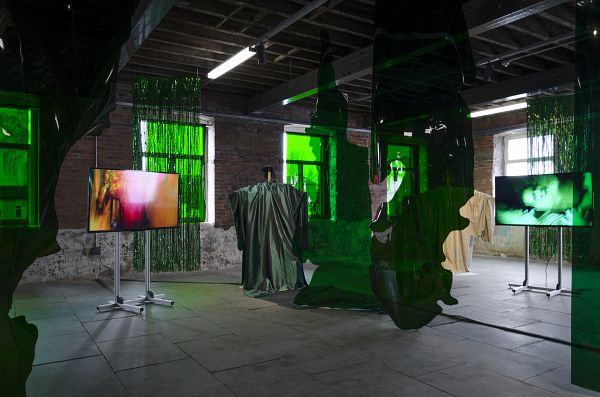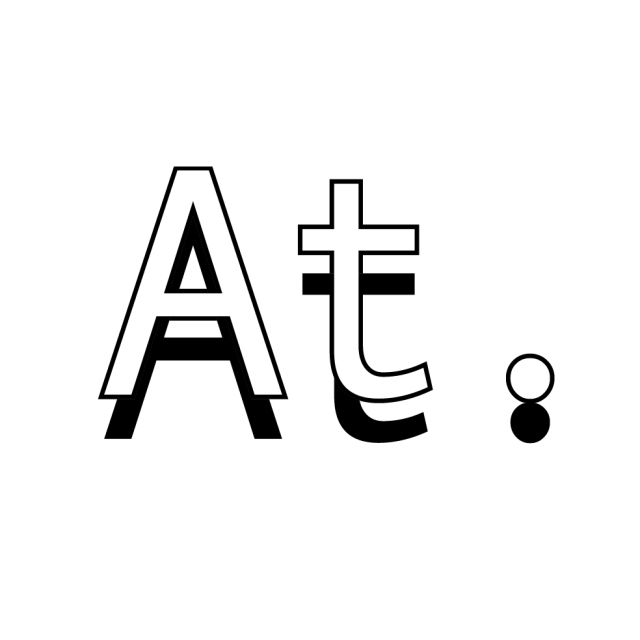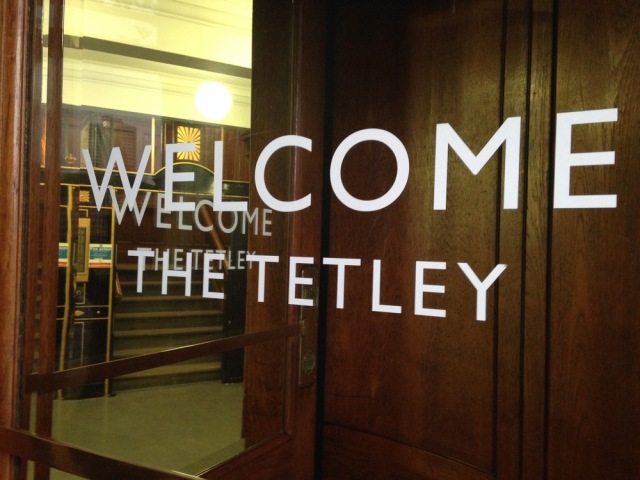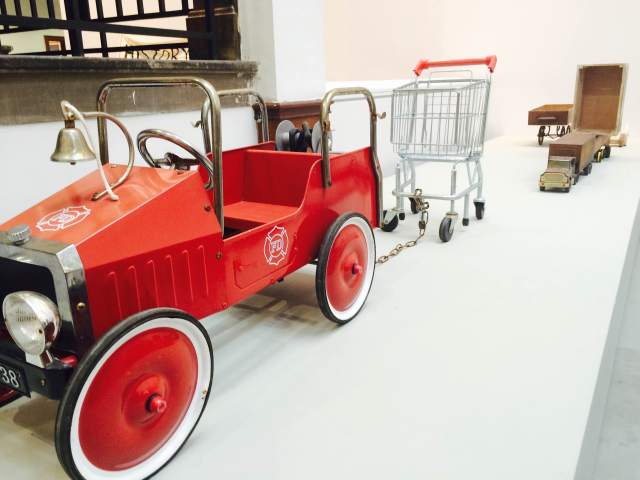Simon Fujiwara
Fabulous Beasts
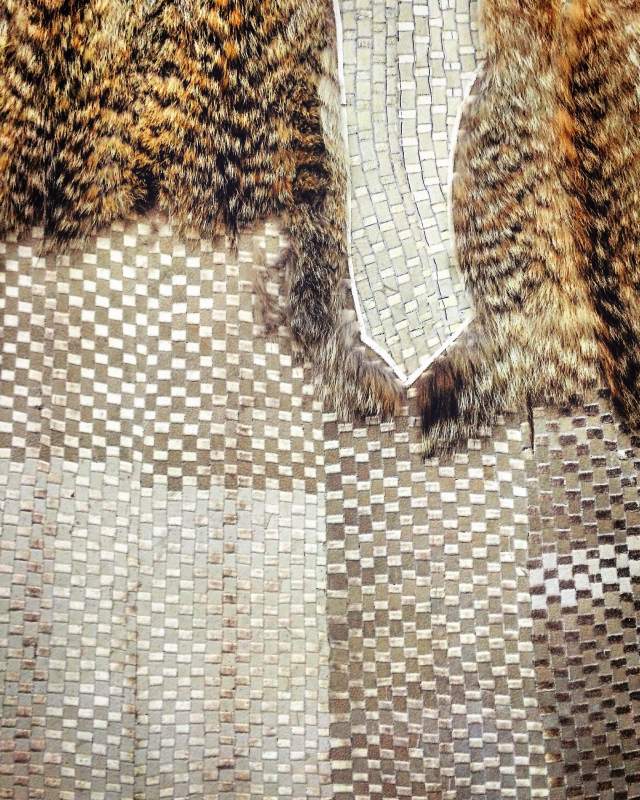
In relation to my current practice, no other work stood quite so highly in my view as Simon Fujiwara’s ‘Fabulous Beasts’ series. In a way very similar to an archaeologist, Fujiwara pays particular attention to the objects that populate our daily lives, especially those considered to have high cultural or economic value, in order to ‘explore grander narratives about history and society’. For this particular series, the artist bought a series of 3 fur coats, once considered luxury commodities. He then laboriously shaved them to reveal a patchwork of skin beneath. Stretched to fit canvasses, these pieces reveal the laborious production methods that went into creating them. This work fits beautifully succinctly into the curators aim of presenting mutating networking forms that act as active agents, living, breathing and communicating of their own accord, not constrained simply by ‘their properties (what they are made of) or their effects (what they tell us)’
The work itself is hung with the centre of the canvases at eye level. They are hung on the wall from behind, with no mirror plates. This could’ve been a deep consideration by the curator, so as not to ruin the aesthetic of the canvases, but also to me, this invisible hanging made them seem much more like single alive organisms, remnants of not only the garment they used to be, but also the ‘beasts’ they once were.
The works that surround this series are based around the notion of material exploration, from Haley Tompkins series of readymades, altered by paint to Anthea Hamilton’s ‘Ant Forms (2015)’. Both of which , for me, seem to explore the natural growth of material, naturally changing form, in relation to the living ants in Hamilton’s piece, to the material behaviour and reaction in Tompkins readymades. For this reason, I feel that Fujiwara’s work suitably fits into this area as an archeological exploration into material. If I had to pull out one negative about the installation of this tryptic, it would be the glaring gap in between the three, where the window sits. for me, this breaks up the flow and rhythm of Fujiwara’s work, one could pass quite simply from one to another and appreciate the sentiment and detail of each piece fully, if not for the stark intrusion down the middle.
Watching the audience interact with the pieces, I noticed that even at first, people would walk up to the pieces, intrigues by their intricacy and form of shapes, then encouraged to read the text at the side of the piece ( which i found beautifully descriptive go the artists process and concept), they were born a new life and the audience began to look even closer to see what could be discovered of this new and changed material.
Adam Broomberg and Oliver Chanarin
Every piece of dust on Freud’s couch
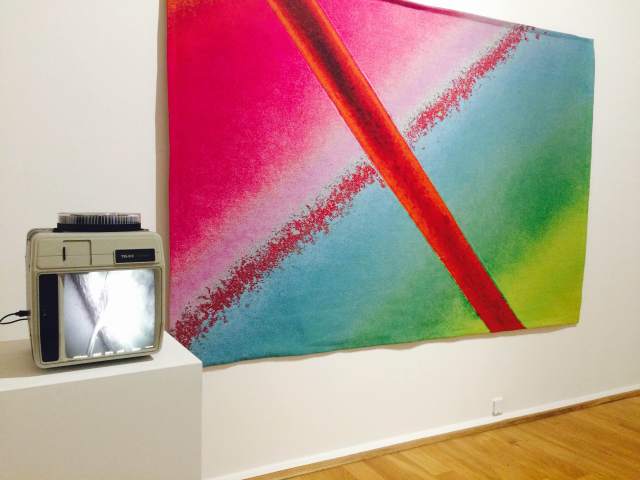
Adam Broomberg & Oliver Chanarin’s piece, ‘ Every piece of dust on Freud’s couch’ 2015. The artists collected DNA samples, strands of hair and fragments of particles left by Freud’s patients. Microscopic scans of these were then transformed into huge colourful tapestries by the pair, representing the size and shape of the material that excavated these images from. This extraordinary play between microscopic material and its relation to us once transformed virtually, teased and tormented these two worlds to create a beautiful and highly material, conceptually embedded piece of art.
This particular piece of Chanarin and Broomberg’s was installed in two pieces, an old slide screen, a a heavily woven tapestry. The old slide screen was presented just below eye level on a plinth. looking slightly down upon it, you could see the old microscopic image slides flickering abound in the top of the machine, as they changed, so did the image on the screen, enabling the viewer to see these tiny images, through photographs, once relayed even larger again on a screen. Hanging behind that was a large heavily woven and bright tapestry with one of these beautiful images printed on top in vivid colours. Nailed to the wall at the corners, this huge piece was from floor to high above eye level, so much so you felt engulfed by the piece, as if you were able to step into it. I really like the way this was presented by the curators, as an immersive piece of art. On the opposite wall hung some complex photographs, diagrams and drawings by Andrea Buttner, ‘Images in Kant’s Critique of the power of Judgement’ (2014), although these complex piers were quite beautiful, because of the multi complex layer and forms of Chanarin and Broomberg’s work, it seemed to almost sink back a little, as the rhythmic clink of the pairs slides drew you closer. I found the text on the wall, full of information, very helpful, and above all left me wanting to know more, which could perhaps only be found by looking deeper into the work itself.
I found, as I watched audience members interact with the work, not many looked at the text on the wall related to it, perhaps it was because it was a little distance away on an adjoining wall. Instead of really understanding the narrative of the piece, and the meaning behind the artists use of heavy woven couch material, and the specific imagery itself, they instead just saw these beautiful, but one can guess, every day microscopic cell like structure images, without quite grasping the weight behind each one. I feel like this was a huge oversight by the curators, perhaps the text should’ve been placed much closer to the piece. Saying that, even without the text, the colours and the material itself, drew me in to the piece, but would it still have done if i wasn’t an art student?


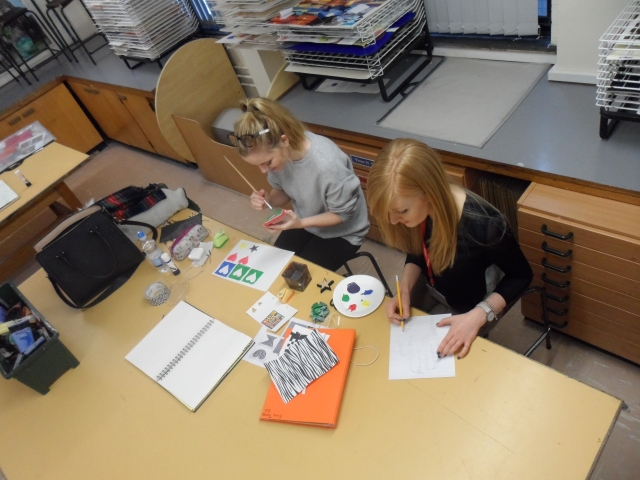













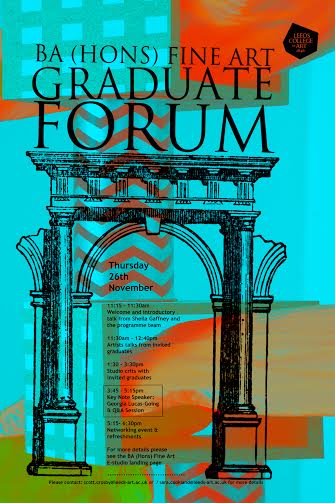 Leeds College of Art graduate forum provides a brilliant opportunity for me to further understand where this course could lead me. Not only this, but it gave the opportunity to learn from other students hindsight. Attending lectures but Alumni such as Paisley Boyd, Eddie Grant, and Georgia Lucas-Going. Each at various stages in their careers, I was able to learn about their experiences and what paths they have taken to get to where they are now.
Leeds College of Art graduate forum provides a brilliant opportunity for me to further understand where this course could lead me. Not only this, but it gave the opportunity to learn from other students hindsight. Attending lectures but Alumni such as Paisley Boyd, Eddie Grant, and Georgia Lucas-Going. Each at various stages in their careers, I was able to learn about their experiences and what paths they have taken to get to where they are now.